We were already familiar with the portable DACs with headphones amplifiers produced by the English brand iFi Audio, and had the opportunity to test the two models, the iDSD Nano and the micro iDSD. Both received glowing reviews, and were both duly awarded our highest honour ? the Qobuzism!
No doubt a victim of retromania, iFi Audio had previously produced a range of trendy, hyper connected devices which were not fashioned with decoding capabilities. Now, though, they have surprised us by presenting a very nice looking vintage ensemble, complete with a DAC amplifier accompanied by two speakers. It is justly baptised the Retro 50.
It is retro in its appearance, certainly, but the CPU, called the Stereo 50, is up to date with the most current pieces of technology. It integrates a DAC that is compatible with PCM digital audio signals of up to 32-Bit/384kHz, a DSD of up to 24.6MHz (DSD eightfold), and also uses tubes for amplification. We should also mention that it has a phono pre-amp ready to deal with any situation? but read on below, as this great device has much more to reveal!


Presentation
The device possesses a very successful retro look, luxurious with a superb facade brushed in anodised aluminium. The device?s exterior is lined with four large buttons and toggle switches, alongside a wooden skin for the Stereo 50 CPU. This all contrasts a bit with the other achievements of the brand which have been, for the most part, wholly modern.
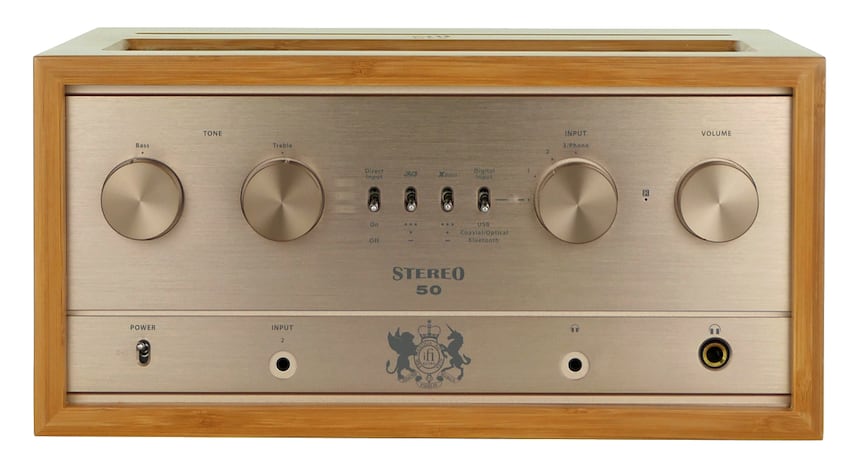
In its retro design, the two buttons on the left side of the front are used to adjust the bass level and the treble. Then come a series of toggle switches, also very much in the classic style.
The first, the Direct Input, allows the signal to bypass all settings to preserve its purity for the input of the amplifier. The second button activates the 3D HolographicSound® system, and it can be selected depending on the speakers used. The extreme position is suitable for small speakers placed on either side of a computer monitor. This 3D system also works for headphones, but the corrections are specific to this type of sound reproduction.
The following switch enables the reinforcement of the bass and has two levels, while the last switch uses a digital source selector in conjunction with the input button with which it is located: the index is found opposite that switch. In between, an arrow will indicate, depending on its colour, the sampling frequency of the digital audio signals. The other three positions of the rotary selector correspond, for positions 1 and 2, to the two linear analogue inputs, while the latter (marked phono) corresponds to one of the available inputs on the rear face for this type of source, benefiting from rich choice courtesy of the Stereo 50.
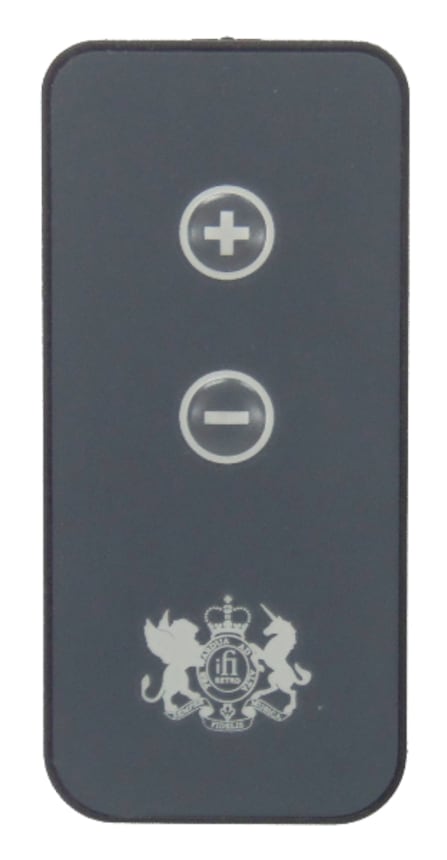
In fact, in addition to the adaptations that can be selected on the rear panel (see the description in the Connectivity paragraph), the phono input can be adapted to specific corrections, as was the case with the phono correction, which was set by the Recording Industry Association of America, or RIAA.
The big volume knob on the right side is motorized, and it overlooks a standard 6.35mm headphone jack which is reserved for normal-level sensitivity headphones. The manufacturer has provided an outlet to the standard 3.5mm jack for headphones and earphones, given that inter-earphones can possess a higher sensitivity.
Another 3.5mm jack is present for connecting a source, as a player, in front, and the power-switch is found in the lower left part of the facade.
Connectivity
However, one cannot call the device the Retro 50 without offering inputs for turntables, and we do find two such inputs from the connections available on the whole system.
The first is intended exclusively for a moving coil, delivering an inherently low voltage level which iFi Audio has called MC Low. The second, adapted for a high-level cell of moving magnet output type (MM: Moving Magnet), can also be configured as an input line with a gain of 6 dB by setting the switch on the left to an input of Line 3 (+6dB). The latter is also suitable to be adapted to the MC input cell of this type, given that the output level is higher than average (MC high).
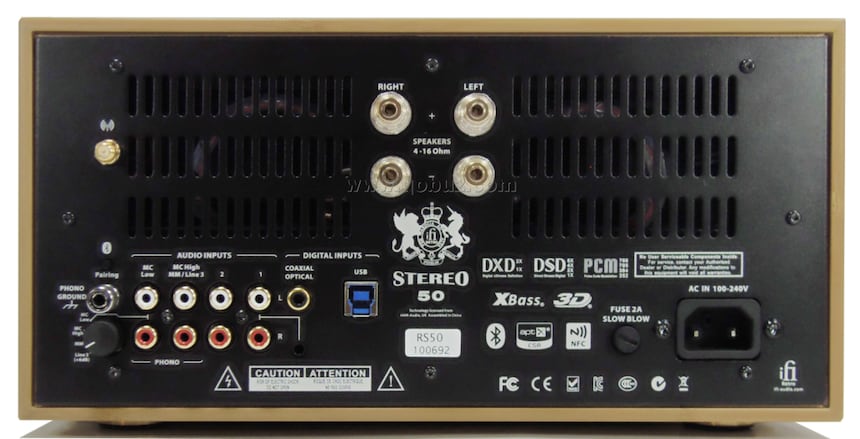
Two linear inputs are also present to connect to any other source than a phone turntable. Alongside them, the two S/PDIF digital inputs, coaxial and optical (the signal presence on the latter is automatically detected when the input selector is on coaxial/optical), and the USB input is compliant with a PCM of up to 32-Bit/384kHZ and a DSD signal of up to 8x DSD. The terminals for the speakers are protected, and can accept banana plugs as the bare wire. Note also the abundant writing/instructions near the base of the sector.
Production
The electronic equipment of the Stereo 50 unit takes place in a closed metal chassis, which stretches from the front to the rear. It is encased in a bamboo finish - which looks great ? and the varnish helps to deliver a really authentic product.
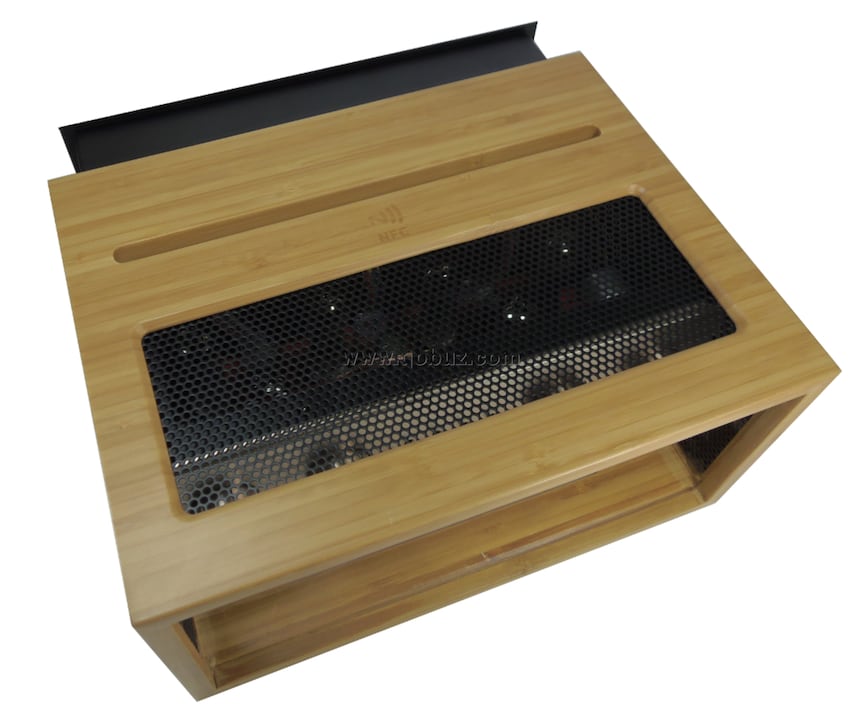
In view of the whole electronics, it can be see that the two output transformer which will communicate the amplified signals to the speakers are encased in insulating tubes. The speakers can conduct any DC voltage (this is elevated as a result of the amplifier tube casings) by adapting the output impedance to the speaker to make a transfer in power (the impedance of the source and receiver must be equal for the transfer to be optimal).
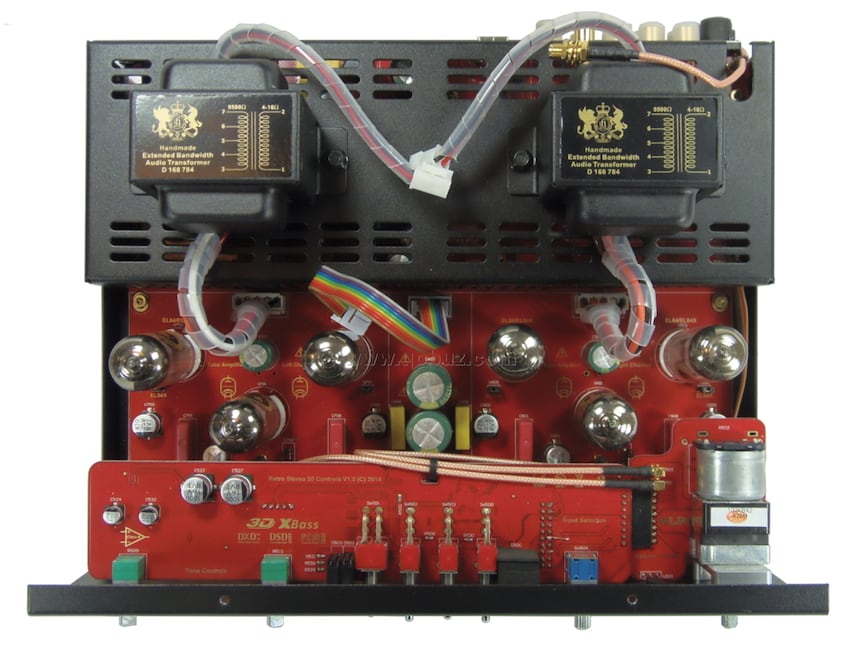
This other view permits to discover the supply, which is of a switching type, and the digital map. This is mounted on columns above the analogue inputs, and in conjunction with the main board, via a multi-rigid contact plug strip.
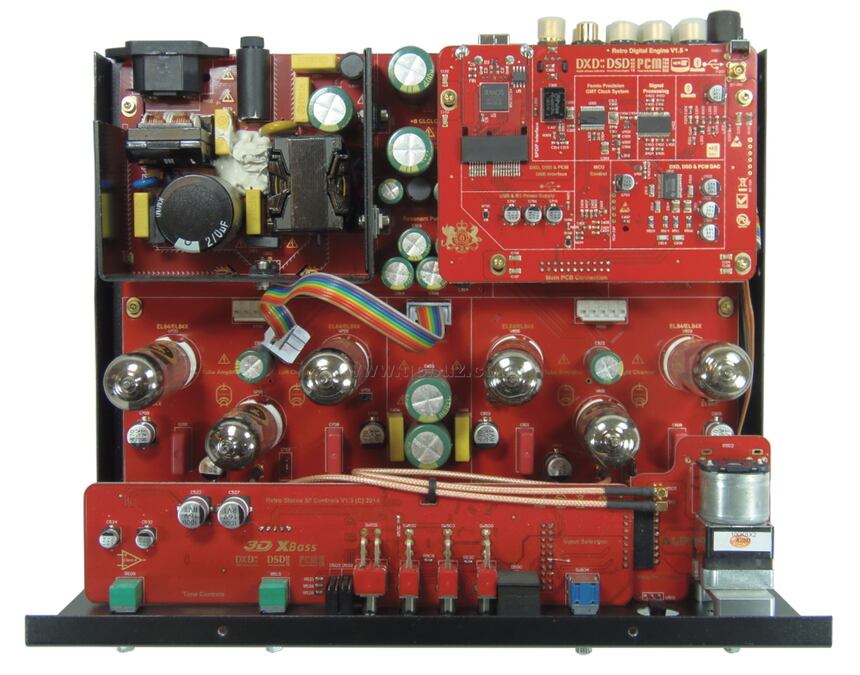
On the upper side of the digital map, one finds the various digital interfaces, including a Femto precision clock, a signal processor, and an analogue digital conversion circuit. All functions are clearly demarcated and marked on the map, while an abundant golden serigraphy signifies the myriad possibilities of the device.
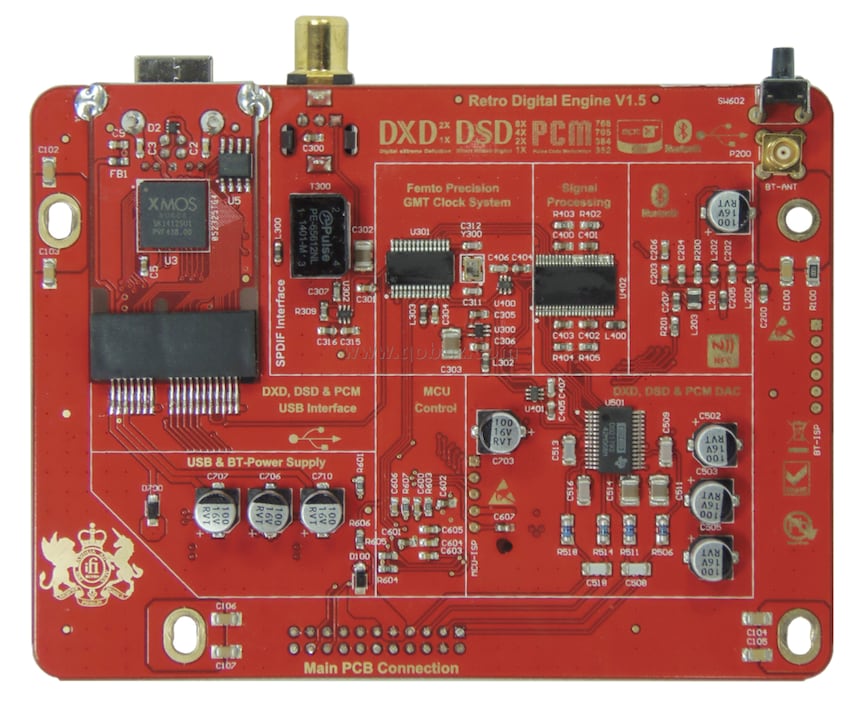
The USB interface is mounted on a small plug-in card, like a mobile DAC from the brand, and uses an 8U XMOS processor which is compatible with 32-Bit PCM signals of up to 384 kHz, and also DSD. At its side, one can see the impedance converter and, in isolated, the S/PDIF coaxial input.
Next, we find the Femto precision clock, responsible for contributing to an extremely low level of jitter, and a signal processor that handles the spatial effects. It probably also incorporates digital filters to ensure the compatibility of a digital to analogue converter chip (and, in this case, it is a DSD1793 manufactured by Burr-Brown Japan), which takes in files sampled beyond 192 kHz, when the integrated digital filter of the chip is disabled. The marking of the integrated circuit used has been cancelled by the manufacturer, due to reasons which have been kept in industrial secrecy.
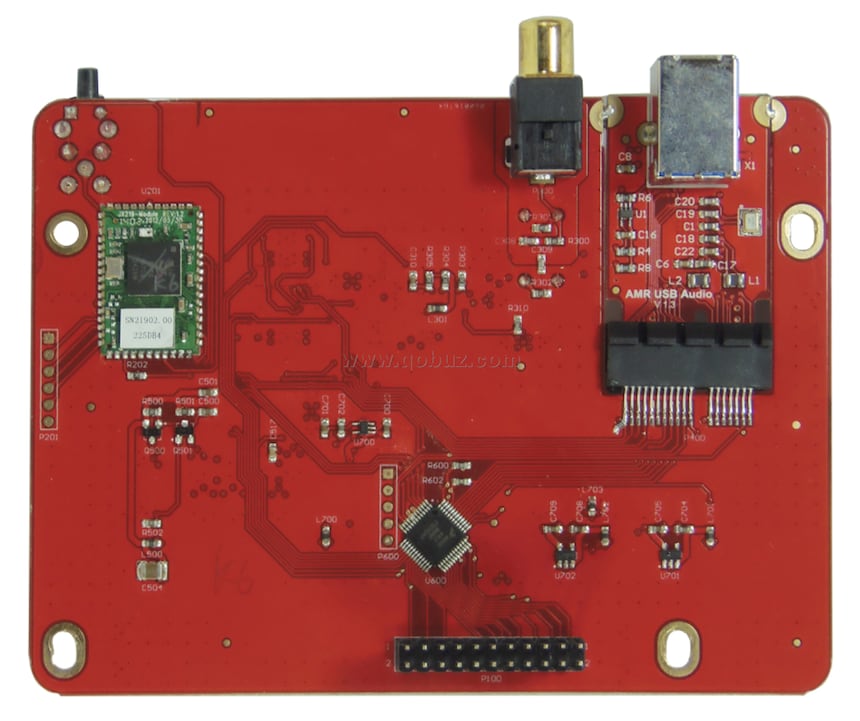
On the other side, the circuit is controlled by an original CSR Bluetooth, which is compatible with aptX alongside a micro-management controller manufactured by Freescale.
The phono preamplifier has need, for the RIAA correction, to use a NJM2068 dual operational amplifier with low noise manufactured by JRC (the New Japan Radio Company). We point your attention to the transistorized stages, which are intended to provide a higher gain in case of using a moving coil, and transistors are preferable in the use of operational amplifiers, as they generate less noise.
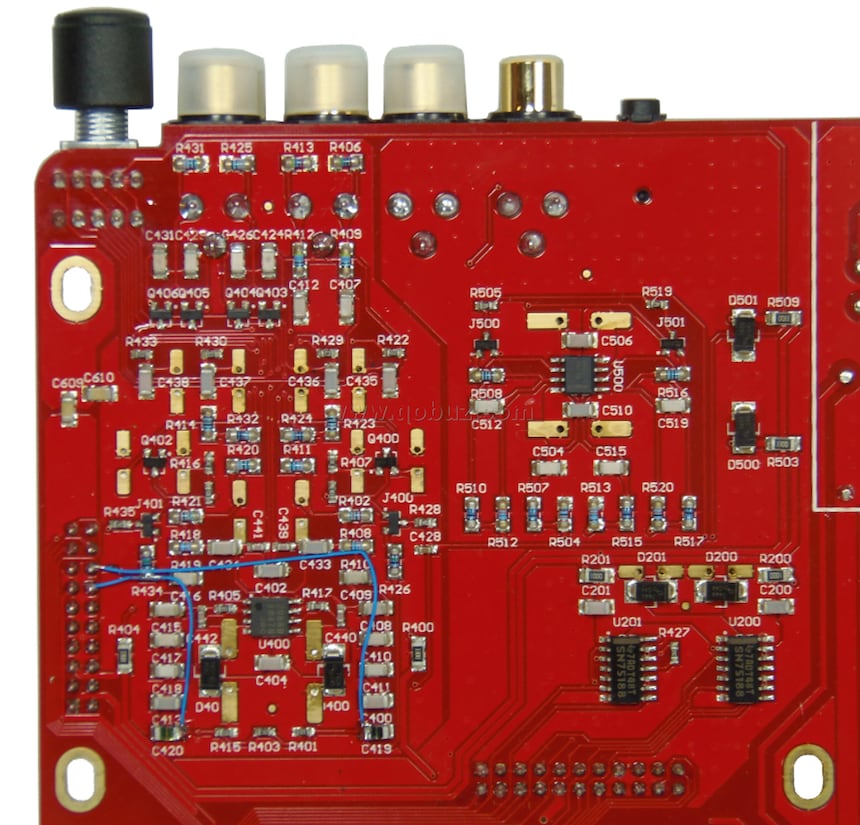
The tubes used for the amplification are EL84X models (for the power stages), and are preceded by a stage of ECF82.
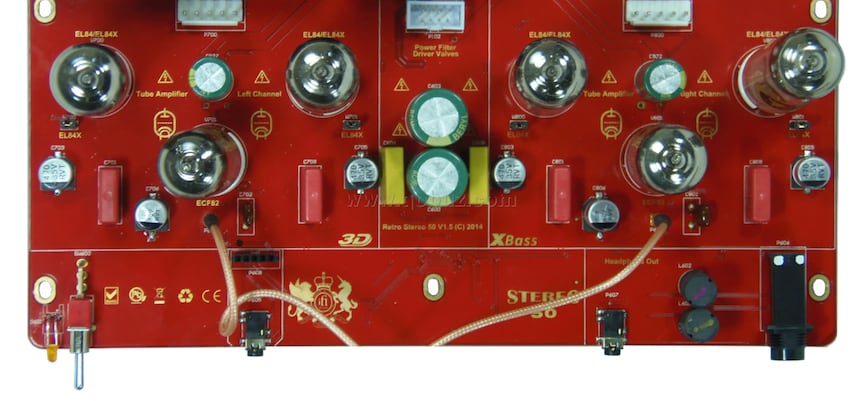
The other side of the circuit comprises many discrete components on the mounting surface. These components take part in the amplification, as do those dedicated to the headset amplifier (visible in the upper right).
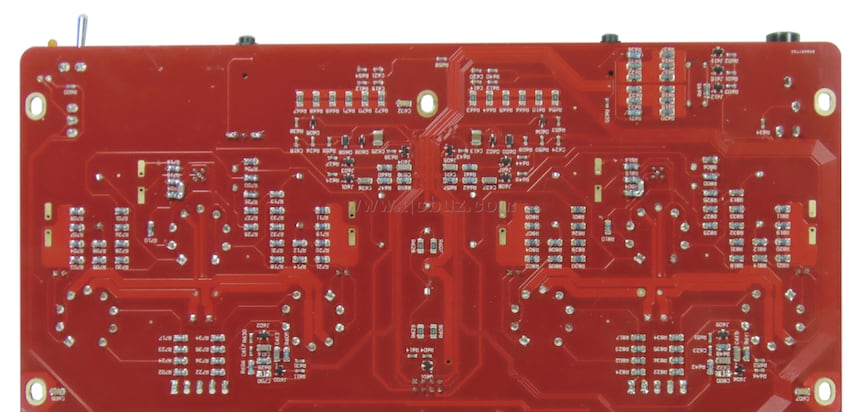
The speakers
The LS3.5 speakers that fit this Retro range will bring back memories, for veterans, of the Hi-Fi, since they are directly inspired by the famous LS3/5A compact speakers. These were developed by the BBC in the mid-70s, and those who remember, will know that these were a huge success, and that production continued until the early 2000s.
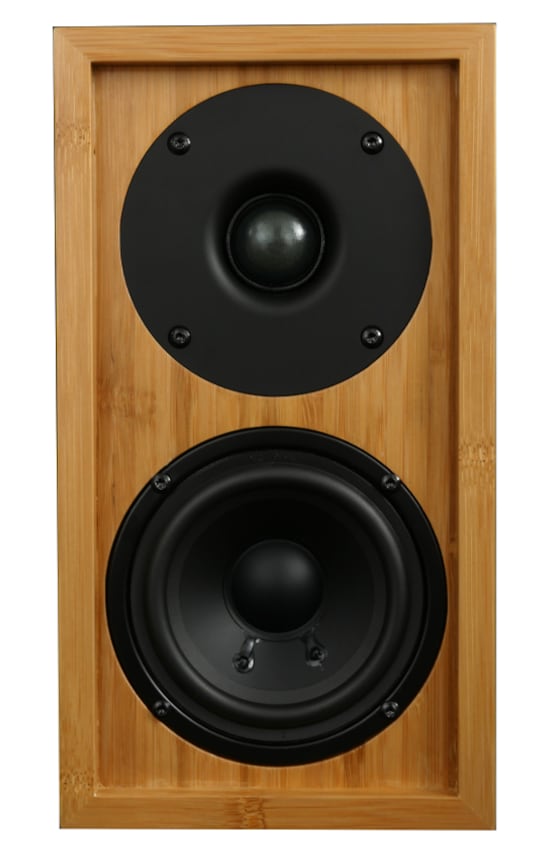
So, these are very compact speakers (and attractive ones), equipped with a bass-midrange speaker of 11 cm cellulose membrane in diameter, possessing also a ferrite magnet of 9 cm in diameter, and a silk dome of 30mm in diameter. These speakers have been specifically developed by iFi Audio, for these speakers are not currently used by any other model.
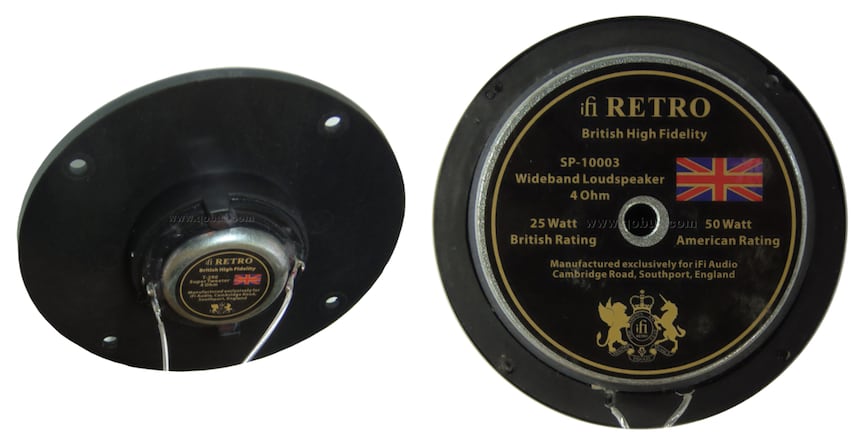

The cabinet of these speakers is made of bamboo, which allows a box to be obtained that is both rigid, and, at the same time, much lighter than the type of material traditionally used for such a product.
The bass speaker is loaded by a transmission line (the equivalent of a long hose at the rear of the speaker) that achieves better results (in a serious manner) than a bass reflex load (especially on impacts). This divides the internal volume of the enclosure into two chambers of unequal volumes, therefore, resulting in two different resonance frequencies.
Listening
The LS3.5 speakers are not very big, but, from the first notes of the Vespri per l'Assunzione di Maria Vergine by Vivaldi, directed by Rinaldo Alessandrini at the head of the Concerto Italiano, we heard a sound reproduction possessing both finesse and delicacy. This came with a serious edge, and another plus point was the fact that the best restitution could be found easily, without it being necessary to tease the volume control or activate some correction. This was reassuring. One notes, equally, a good purchase on the string attack. The chords rise well into the treble, without harshness, and there is a flattering coquettishness present on the female voice.
On this work, the action of the 3D system results in a grown up sound image that extends well beyond the reach of hte speakers. And, we must say, it was particularly good when the XBass was set up, which scored a sound restitution winner with its undeniable consistency.
With the title The Sun Is Gonna Rise Again from the album Where I Belong by Cris Cab, the sound reproduction is full of punch. It is very light, whilst somehow also severe enough to hit hard when Direct Input Mode is used. This is strengthened effectively by using this button in conjunction with the Xbass, which gives a defined return, particularly on the voices.
Still making use of a little correction in the bass, the thundering In the Hall of the Mountain King, taken from Grieg?s Peer Gynt by Jeffrey Tate at the head of the Berliner Philharmoniker, offers us a thorough showing of the L3.5. There is no lacking of impact when it comes to bass drum and timpani!
Listening in conjunction with the Bluetooth aptX, on the title Dangerous from the album Listen by David Guetta, the restitution demonstrated a good punch, and delivered, not only in terms of decibels. But, it was after making use of the XBass service, and increasing the low of the bass slightly, that we became even more impressed by the serious rendering offered, both in terms of level and impact. This was not something that we would expect from such a small speaker. Qobuz was impressed.
When listening, with headphones, to the same title Dangerous in liaison with the aptX Bluetooth, one really heard a difference. The action of the 3D XBass gave the added treat of a devilishly playful and airy restitution, knocking loudly at the bass end without sounding confused. It put us, again, in a good mood.
With the extract from Clavier bien Tempéré by Johann Sebastian Bach in DSD (test file provided by Cybele Records), to finish off our listening session, the sound quality provided an excellent, airy sense of definition. The Steinway D piano, played by Thomas Günther, range out with good volume.
In conclusion, this iFi Audio Retro 50 system successfully combines modern digital technology with a comprehensive phono stage for lovers of vinyl. These is also some great tube amplification, all wrapped under a delightfully vintage layout. With corrections, effective sound effects, and small LS3.5 quality speakers, this system provides a devilishly exciting sound reproduction, and we decided to give out our Qobuzism reward.
Elite Diffusion website (importer)
Further Reading

To follow everything that happens at Qobuz, like us on Facebook!
If you are a manufacturer, importer, distributor or agent in the field of sound reproduction, and would like to contact us, please do so through the following address: newstech@qobuz.com
If you are passionate about the contents of our Hi-Fi Guide and wish to contact us, please do so through the following address only: rubriquehifi@qobuz.com


